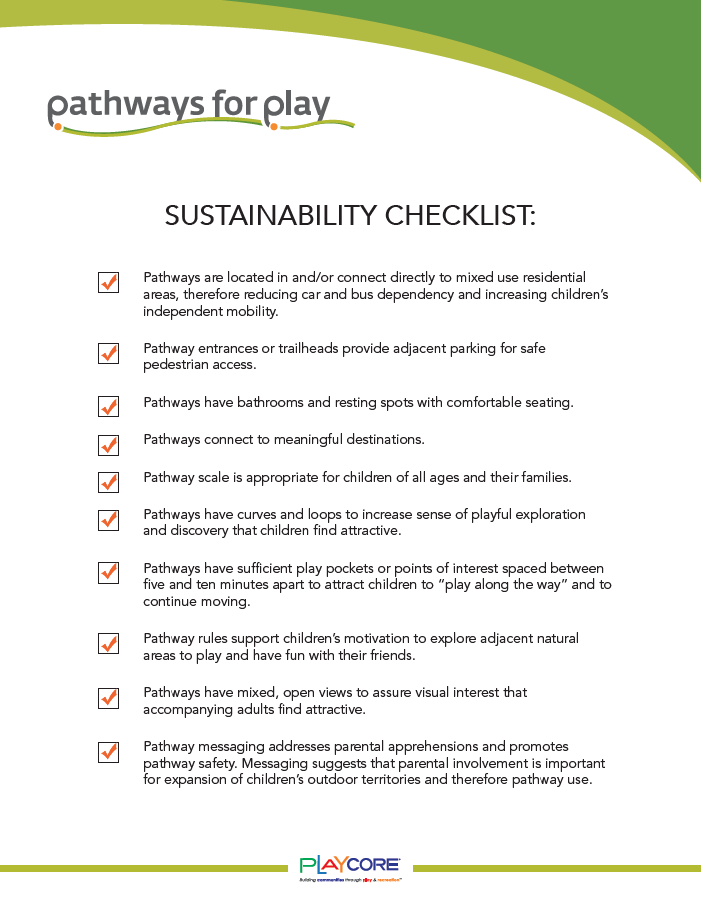Over time, as pathway networks are extended and investment in play pockets increases, playful pathways continue to strongly support use by children and families. Repeat visits will also build social and political support for increased financial investment, including from public health agencies. Actions to guarantee long-term sustainability include:
- Design new pathways and renovate existing pathways to include children and families as a priority user group and increase play value.
- Affect design and planning policies to respond to the particular needs of children and families for transportation and close-to-home playful connectivity to people and places.
- Utilize pathways to help children, play, learn, and experience active lifestyle habits and daily contact with nature.
Through best practice guidelines and principles for Pathways for Play, we have developed a Pathways Sustainability Checklist:










